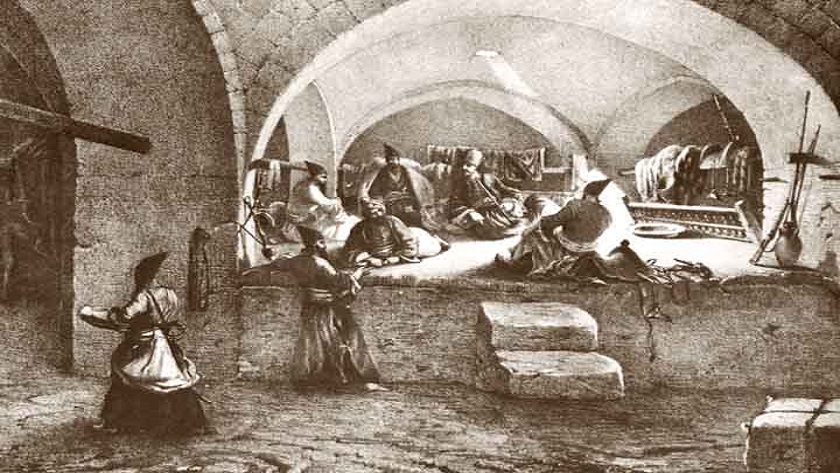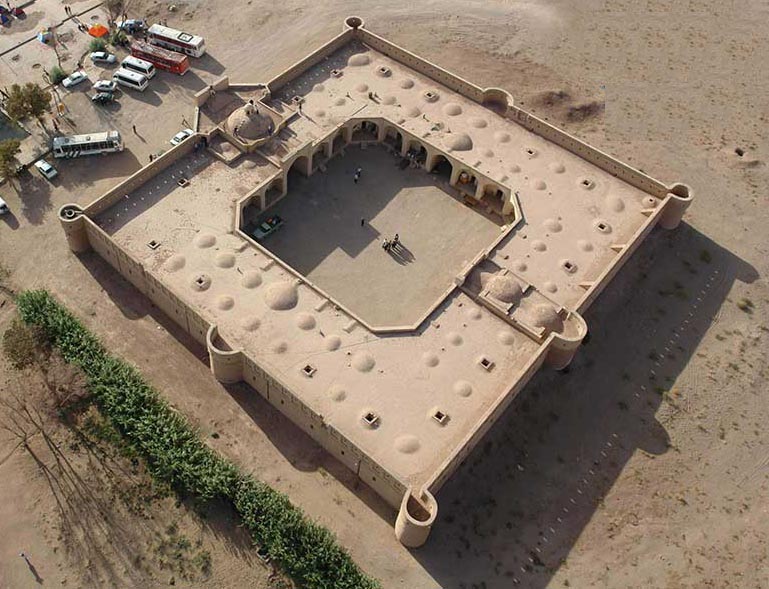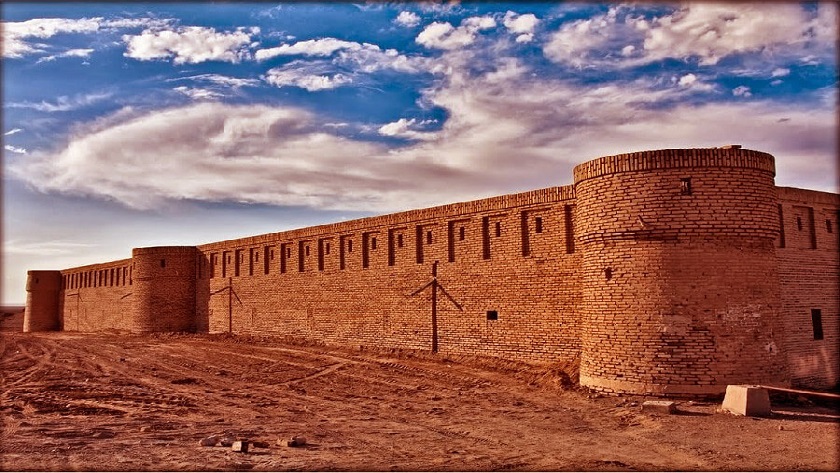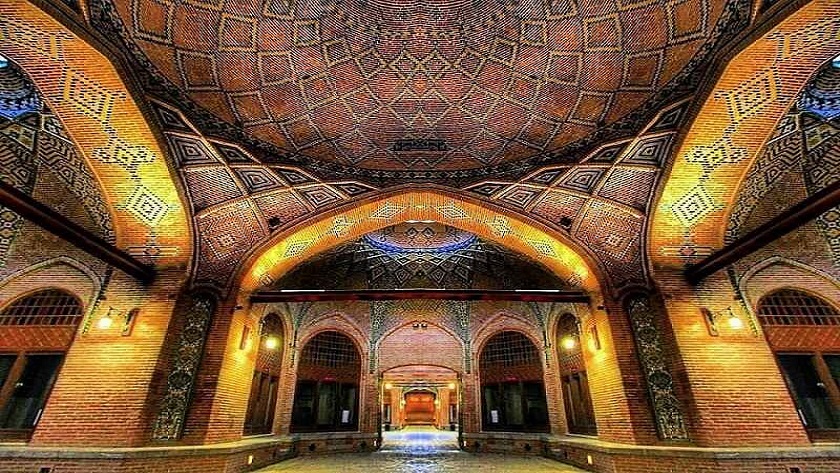Iran Press/ Iran news: The Caravanserais are one of the most important forms of Persian Architecture that emerged and created cause of routes development and needs relating to the travel demands and requirements.
As Iran historically is located between the main ancient civilizations, the historical roads played a critical role in Persian civilization. From the beginning of history to the current time, the role of Iran as a bridge has encouraged the Iranian people to always care about roads and related structures as one of the main financial income resources.
 Carvansarais shelters travelers on desert nights
Carvansarais shelters travelers on desert nights
Caravanserai roots in Persian culture
Caravanserai, Karavansaray, Robaat, and Chapaar Khaneh, are the several names of a building that first time emerged in Persian architectural history. This term goes from Persian to other languages across the world. In Persian, it included two words: Caravan (group of travelers) and seray (House and place to stay). It means (House for a group of travelers). So the Persian culture donated this word to the world civilizations.
Caravanserai of Sa’d al-Saltaneh now a major tourist attractions and Bazzar
Persian Caravansarai in History
Caravansarai in Iran According to historical sources, the origin of caravansaries in Iran goes back to the reign of the Achaemenids. They flourished whenever a central powerful state ruled the country providing higher safety and security of roads and thus the transport of commodities.
 An old painting depicts life in a Carvansarai
An old painting depicts life in a Carvansarai
The connection between traveling and caravanserai goes back to the Achaemenid era when Herodotus informs of 111 Chapar khanes along the ancient royal route connecting ancient cities Sardis to Susa. Chapar Khaneh which refers to the postal service was the invention of Cyrus the Great and was the fastest communication system of this time. Chapar was a fast courier who was provided with a fresh horse and food at each station at specific distances in order to not linger for supplies or wait for his horse to rest.
 Tourists visiting an ancient caravanserai
Tourists visiting an ancient caravanserai
So Caravanserais came to exist to answer the needs of travelers along their long journeys. Caravanserais had anything a small city has; that is why they were also called the "miniature city".
The peak of security and commercial motivations was seen under Shah Abbas’ reign, Thus the Safavid era can be considered as the Golden era in the history of caravansaries in Iran.
Ganjali Khan Caravanserai; A tourist, architectural attraction in Kerman
Architectural properties and significance
Most caravansaries were built of baked bricks and gypsum. Some of them with a well of water inside or a cistern outside to collect rainwater for drinking. Some others have housed a garrison of state guards, apparently to maintain control of routes. In most cases, caravansaries have a square enclosure.
Caravanserais are usually a place that provides safety for Caravans and travelers against natural risks like rain, snow, storms floods, or the danger of robbers on the roads. That’s why the structure of Caravanserais is like a castle and well fortified.
 The main functions of Caravanserais were to protect traders, travelers
The main functions of Caravanserais were to protect traders, travelers
Inside the enclosure, there is a large central courtyard that is surrounded by rooms, and each room has an anteroom and behind, a row of stables with raised niches in the walls for use as the sleeping platform. On some occasions, outside the enclosure was a domed cistern. Sadly, nowadays, these historical remains have been left as ruins and a place for homeless and addicted people.
Deyre Gachin Caravanserai; beauty of Iranian historical architecture
Iran and Silk Road
Silk Road is one of the long-lasting corridors which played an important role in the Persian Empire during history. The Silk Roads have connected civilizations and brought peoples and cultures into contact with each other from across the world for thousands of years, permitting not only an exchange of goods but an interaction of ideas and cultures that have shaped the modern world today. The historical roads have had several elements related to their functions.
 Caravanserais were economic, and cultural hubs for centuries
Caravanserais were economic, and cultural hubs for centuries
Bridges, Caravanserais, checkpoints, castles Bazaars, and specifically caravanserais as the main element of the historical roads in Iran, were not only simple places for travelers to rest and keep safe their belongs, but also meeting points for travelers, merchants, scientists, and many other scholars who wanted to exchange knowledge and ideas, as well as discover new civilizations.
Yam historical Caravanserai; tourist attraction on Silk Road
Fine extant Caravanserais
Zein-o-din Caravanserai is one of the most unique and amazing caravanserais in Iran which dates back to about 400 years ago. It was built during the reign of Shah Abbas Safavid. At that time, more than 999 caravanserais were built in Iran and Zein-o-din is among the most beautiful ones of its kind. The building is one of the masterpieces of the Safavid era and is the only circular Iranian monument located on the Silk Road (in the central part of Mehriz, 50 km away from Yazd city).
 Zein-o-Din Caravanserai near Yazd
Zein-o-Din Caravanserai near Yazd
Abbasi Caravanserai is located in the historic city of Kouhpayeh, 60 km away from the Isfahan-Naeen road. Abbasi caravansary dates back to the Safavid era.
 Abbasi Caravanserai is located on the Isfahan-Naeen road
Abbasi Caravanserai is located on the Isfahan-Naeen road
The Caravanserai of Sa’d al-Saltaneh is one of the picturesque monuments of Qazvin city. A historical building belongs to the reign of the Qajar dynasty. It is located in the central district of Qazvin. It was built by the command of Sa’d-Al-Saltaneh during the kingship of Naser-Al-Din Shah Qajar. It also is near the other famous monuments of Qazvin, the old bazaar, and the Chehelsotun mansion.
 This beautifully restored Qajar-era caravanserai is now the design center of Qazvin
This beautifully restored Qajar-era caravanserai is now the design center of Qazvin
Pasangan is a large caravanserai, about 2500 meters, which is 400 years old. It is located in Qom and recently, has been transformed into a beautiful residence.
The main reason for accommodating Pasangan is the possibility of observing the night sky, as it is located at the Maranjab Desert route.
 There are numerous gorgeous caravanserais across Iran worth the visit
There are numerous gorgeous caravanserais across Iran worth the visit
Ancient Caravanserais; Modern tourist accomadations
Although today, almost no one travels like a caravanner, accommodating one of these ancient caravanserais can be an amazing experience. Spending a few nights in these old inns is like traveling in time. So, if you are planning an exotic trip to Iran, join us to explore some ancient accommodations for an excellent journey.
Read more:
Deyre Gachin Caravanserai; beauty of Iranian historical architecture
Ashkan Salehian

